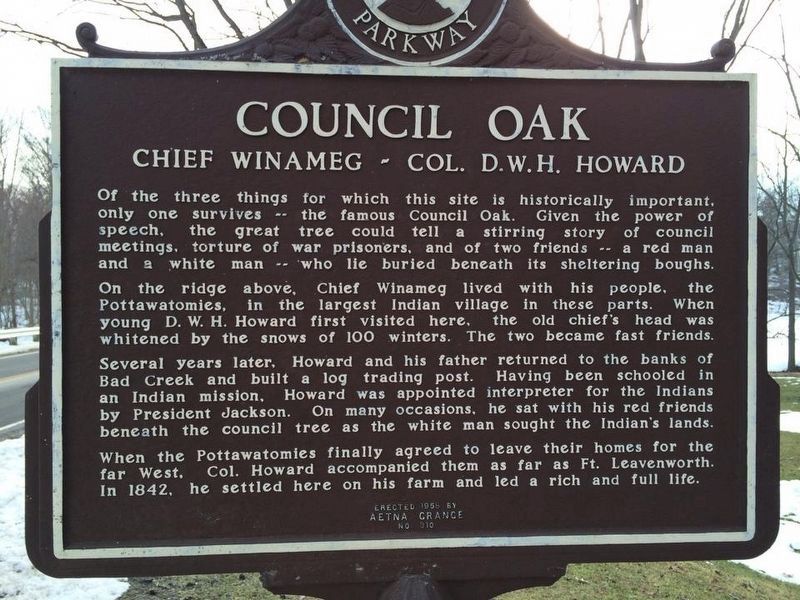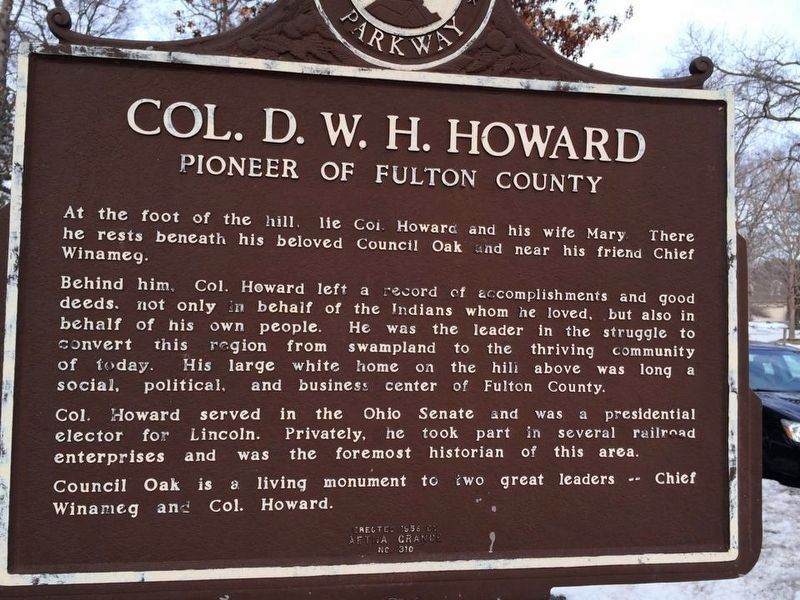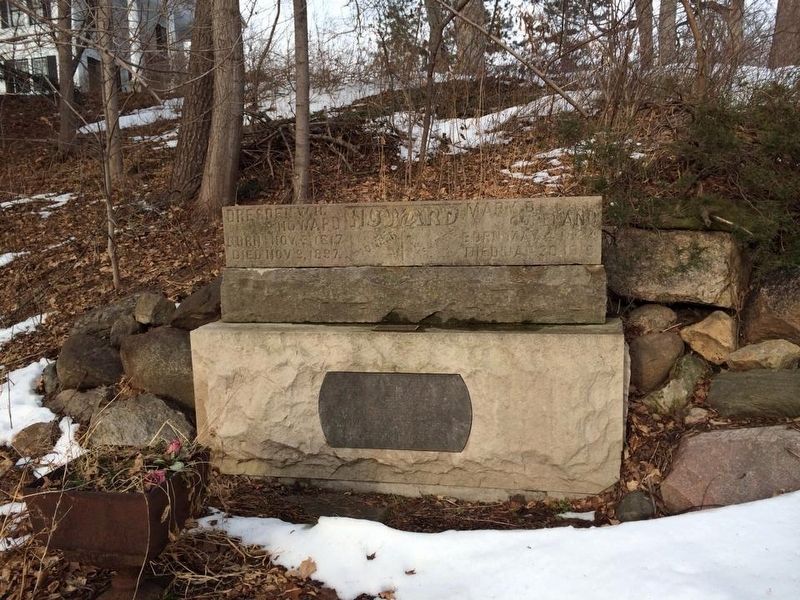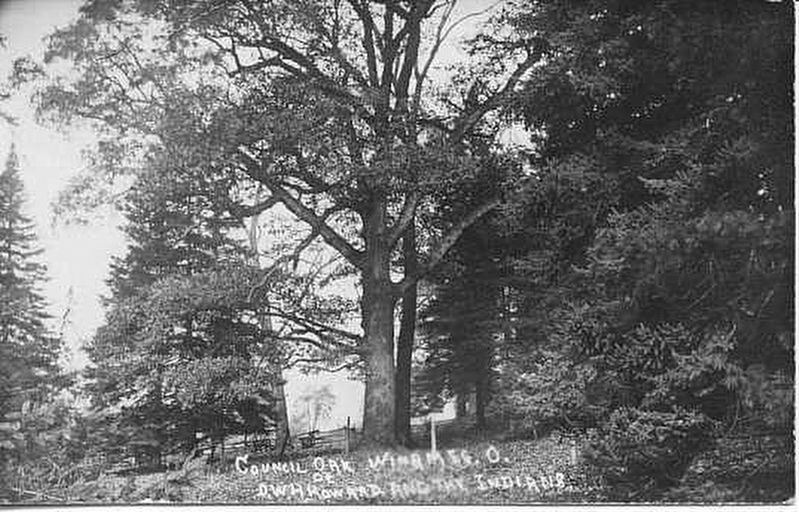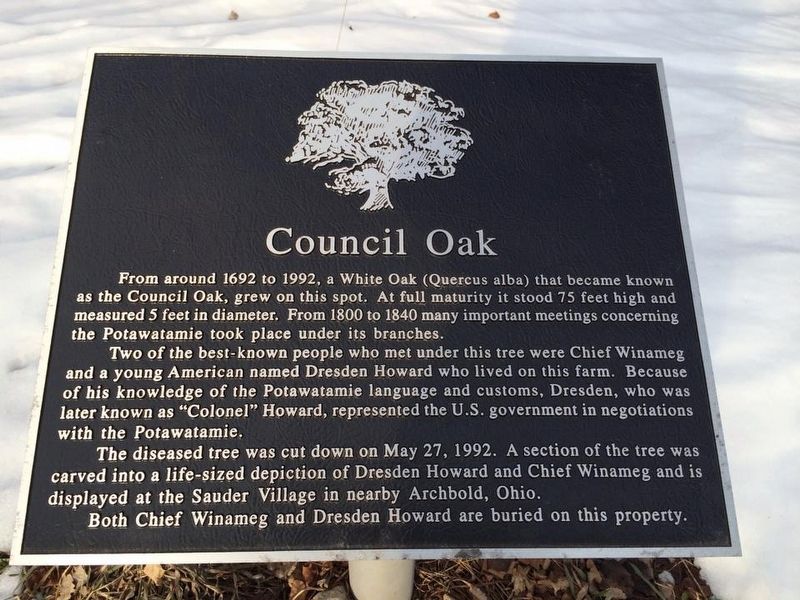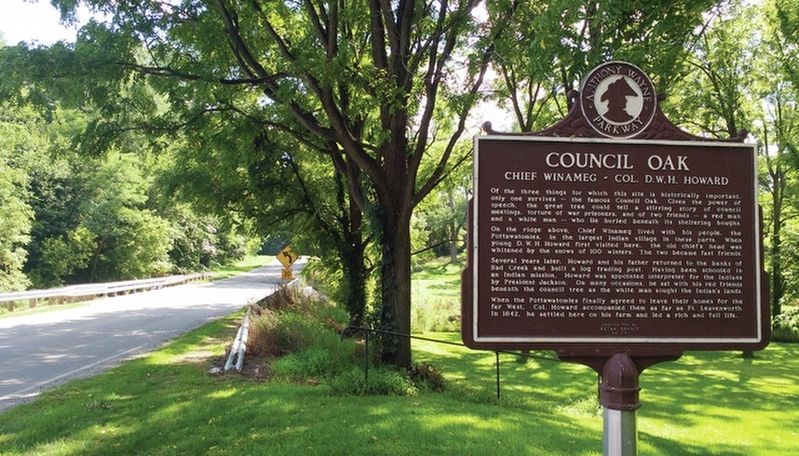Council Oak / Col. D.W.H. Howard
Chief Winameg - Col, D.W.H. Howard / Pioneer of Fulton County
Council Oak
Of the three things for which the site is historically important, only one survives - the famous Council Oak. Given the power of speech, the great tree could tell a stirring story of council meetings, torture of war prisoners, and of two friends - a red man and a white man - who lie buried beneath its sheltering boughs.
On the ridge above, Chief Winameg lived with his people, the Pottawatomies, in the largest Indian village in these parts. When young D.W.H. Howard first visited here, the old chief's head was whitened by the snows of 100 winters. The two became fast friends.
Several years later, Howard and his father returned to the banks of Bad Creek and built a log trading post. Having been schooled in an Indian mission, Howard was appointed interpreter for the Indians by President Jackson. On many occasions, he sat with his red friends beneath the council tree as the white man sought the Indian's lands.
When the Pottawatomies finally agreed to leave their homes for the far West, Col. Howard accompanied them as far as Ft. Leavenworth. In 1842, he settled here on his farm and led a rich and full life.
Col. D.W.H. Howard
At the foot of the hill, lie Col. Howard and his wife Mary. There he rests beneath his beloved Council Oak and near his friend Chief Winameg.
Behind him, Col.
Howard left a record of accomplishments and good deeds, not only in behalf of the Indians whom he loved, but also in behalf of his own people. He was the leader in the struggle to convert this region from swampland to the thriving community of today. His large white home on the hill above was long a social, political, and business center of Fulton County.Col. Howard served in the Ohio Senate and was a presidential elector for Lincoln. Privately, he took part in several railroad enterprises and was the foremost historian of this area.
Council Oak is a living monument to the two great leaders -- Chief Winameg and Col. Howard.
Erected 1956 by Aetna Grange No. 310.
Topics and series. This historical marker is listed in these topic lists: Cemeteries & Burial Sites • Native Americans • Settlements & Settlers. In addition, it is included in the Former U.S. Presidents: #07 Andrew Jackson series list.
Location. 41° 37.275′ N, 84° 4.043′ W. Marker is in Winameg, Ohio, in Fulton County. Marker is on County Road 102, on the left when traveling north. Touch for map. Marker is in this post office area: Delta OH 43515, United States of America. Touch for directions.
Other nearby markers. At least 8 other markers are within 5 miles of this marker, measured as the crow flies. Winameg Mounds (here, next to this marker); Council Oak (within shouting
More about this marker. This is also an Anthony Wayne Parkway marker.
Regarding Council Oak / Col. D.W.H. Howard. The tree is no longer there, having succumbed to disease and then removed in 1992. The tree was 300 years old when cut down. See accompanying photo of a marker where the tree stood. The whole story of this area and the Chief and Colonel is worth your further research and reading. It is a really interesting area. In addition to the tree and the two men, the hill above the tree is the site of prehistoric mounds, and within a few blocks were also discovered mastodon bones in a bog area. This area was of apparent interest to the aboriginal peoples for a very long time.
http://www.rootsweb.ancestry.com/~ohfulton/DeltaSesquicentennial/MoundsBadCreek.htm
Credits. This page was last revised on December 8, 2017. It was originally submitted on January 12, 2017, by Michael Baker of Lima, Ohio. This page has been viewed 1,822 times since then and 122 times this year. Photos: 1, 2, 3, 4, 5, 6. submitted on January 12, 2017, by Michael Baker of Lima, Ohio. • Bill Pfingsten was the editor who published this page.
